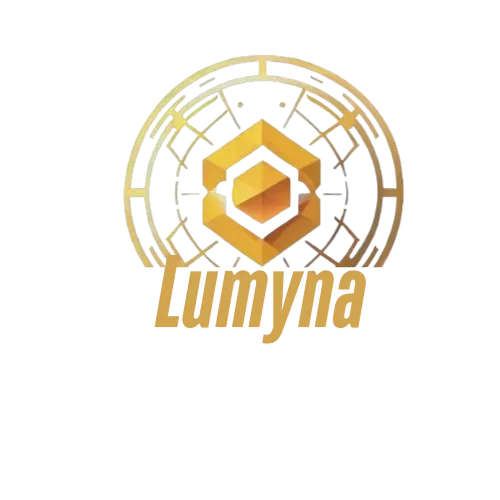Cryptocurrency is a dynamic and innovative space, with new types of digital assets constantly emerging. Among these, weird ERC20 tokens stand out for their unconventional behaviors and unexpected features. Built on the Ethereum blockchain, these tokens follow the ERC20 standard but often deviate from typical expectations, sometimes leading to surprising outcomes for users and developers.
This article explores what weird ERC20 tokens are, their unique characteristics, potential risks, and how they impact the crypto ecosystem.
What Are ERC20 Tokens?
Before diving into weird ERC20 tokens, let’s clarify what ERC20 tokens are. ERC20 is a standard set of rules for creating tokens on the Ethereum blockchain, a popular platform for decentralized applications. The term “ERC20” stands for “Ethereum Request for Comment 20,” defining how tokens should function to ensure compatibility with Ethereum-based wallets, exchanges, and smart contracts.
ERC20 tokens can represent various assets, such as digital currencies, loyalty points, or collectibles. They include basic functions like transferring tokens, checking balances, and approving spending. However, the ERC20 standard is loosely defined, allowing developers to create tokens with unexpected behaviors, which leads us to weird ERC20 tokens.
What Are Weird ERC20 Tokens?
Weird ERC20 tokens are tokens that follow the ERC20 standard but exhibit unusual or non-standard behaviors that can surprise users or developers. These behaviors often deviate from the expected norms of ERC20 tokens, creating challenges for smart contracts or applications that interact with them. According to a repository of minimal example implementations in Solidity, these tokens are based on real-world cases, many of which have been exploited in the past due to their quirks.
The loose ERC20 specification allows developers to implement the standard in creative or problematic ways. For example, some tokens may not return expected values, charge fees unexpectedly, or allow upgrades that change their behavior. These peculiarities make weird ERC20 tokens both fascinating and risky.
Common Types of Weird ERC20 Tokens
Weird ERC20 tokens come in many forms, each with unique behaviors that can affect how they interact with smart contracts or users. Below are some key examples, inspired by the referenced Solidity repository:
Reentrant Tokens
Some tokens, like ERC777, allow reentrant calls during transfers, meaning they can call back into the sender’s contract before the transfer completes. This behavior has led to exploits, such as draining funds from Uniswap pools or lending platforms.
Tokens with Missing Return Values
Certain tokens, like USDT or BNB, don’t return a boolean value (true/false) for transfer operations, despite the ERC20 standard suggesting they should. Others, like Tether Gold, return false even when a transfer succeeds, confusing smart contracts that rely on these values.
Fee-on-Transfer Tokens
Some tokens, such as STA or PAXG, deduct a fee during transfers, meaning the recipient gets less than the sent amount. This caused issues in Balancer pools, where $500,000 was drained due to unexpected fee calculations.
Rebasing Tokens
Tokens like Ampleforth adjust balances automatically outside of transfers, a process called rebasing. This can disrupt smart contracts that cache balances, as seen in Uniswap and Balancer pools.
Upgradable Tokens
Tokens like USDC or USDT can be upgraded by their owners, allowing changes to their logic at any time. This flexibility can break smart contracts that rely on consistent behavior.
Flash Mintable Tokens
Tokens like DAI allow flash minting, where large amounts can be minted and used within a single transaction, provided they’re returned. This can lead to unexpected total supply changes.
Tokens with Blocklists
Some tokens, like USDC, have admin-controlled blocklists that prevent transfers to or from specific addresses. This could trap funds in contracts if an address is blocked.
Pausable Tokens
Tokens like BNB can be paused by an admin, halting all transfers. This introduces risks if the token owner is malicious or compromised.
Approval Race Protections
Tokens like USDT prevent approving a new amount if an existing approval exists, protecting against certain attacks but complicating smart contract logic.
Low or High Decimals
Tokens like USDC (6 decimals) or YAM-V2 (24 decimals) deviate from the standard 18 decimals, causing precision issues or overflow risks in calculations.
Why Do Weird ERC20 Tokens Exist?
Weird ERC20 tokens are often created for specific reasons, ranging from innovation to oversight:
- Creative Experimentation: Developers may design tokens with unique features to test new ideas or stand out in the crowded crypto market.
- Niche Use Cases: Some tokens serve specialized purposes, like loyalty programs or collectibles, requiring non-standard behaviors.
- Legacy or Oversight: Older tokens like USDT may have quirks due to early design choices or lack of strict standards at the time.
- Security Measures: Features like approval race protections or blocklists aim to enhance security but can introduce complexity.
- Upgradability: Tokens designed to evolve, like USDC, allow owners to adapt to new regulations or market needs.
While these tokens add diversity to the crypto ecosystem, their unusual behaviors require careful handling.
Risks of Weird ERC20 Tokens
Weird ERC20 tokens pose several risks for users and developers:
- Smart Contract Exploits: Unexpected behaviors, like reentrant calls or fee-on-transfer mechanics, have led to significant losses in platforms like Uniswap and Balancer.
- Funds Getting Stuck: Blocklists or pausable tokens can trap funds in contracts, especially if an admin acts maliciously.
- Compatibility Issues: Tokens with missing return values or non-standard decimals can break smart contracts that assume standard ERC20 behavior.
- Scams and Malicious Tokens: Some tokens include malicious code in their metadata (e.g., JavaScript in token names) to exploit vulnerable platforms.
- Regulatory Risks: Upgradable or blocklisted tokens may face regulatory actions, affecting their usability.
To mitigate these risks, developers should use allowlists of trusted tokens, wrap token interactions in dedicated contracts, and code defensively. Users should research tokens thoroughly and avoid unverified projects.
How to Safely Interact with Weird ERC20 Tokens
If you’re interested in exploring weird ERC20 tokens, follow these steps to stay safe:
- Use a Trusted Wallet: Set up an Ethereum-compatible wallet like MetaMask or Trust Wallet to store and manage ERC20 tokens securely.
- Acquire Ethereum (ETH): You’ll need ETH to pay for transaction fees (gas) when interacting with ERC20 tokens. Buy ETH on exchanges like Coinbase or Binance.
- Research Tokens: Check the tokens on platforms like Uniswap or SushiSwap. Verify the token’s website, smart contract, and community discussions to ensure legitimacy.
- Start Small: Experiment with small amounts to minimize risk, especially with unfamiliar tokens.
- Join Communities: Engage with token communities on platforms like X or Discord to learn about their purpose and updates.
The Future of Weird ERC20 Tokens
Weird ERC20 tokens highlight both the flexibility and challenges of the ERC20 standard. As Ethereum evolves with scaling solutions like layer-2 networks, creating and interacting with tokens will become cheaper and more accessible, potentially leading to more quirky tokens. However, developers are increasingly adopting safer practices, such as allowlists and defensive coding, to handle these tokens securely.
In the future, we may see standardized improvements to the ERC20 specification or new standards like ERC777 or EIP-2612 (permit functions) gaining traction, reducing the prevalence of weird behaviors. Until then, weird ERC20 tokens will remain a fascinating, if risky, part of the crypto landscape.
Conclusion
Weird ERC20 tokens are a unique and intriguing aspect of the cryptocurrency world, showcasing the creativity and complexity of Ethereum’s blockchain. From reentrant calls to fee-on-transfer mechanics, these tokens deviate from standard expectations, offering both innovation and challenges. While they can be fun to explore, their unusual behaviors require caution from users and developers alike. By understanding their quirks and following safe practices, you can navigate the world of weird ERC20 tokens with confidence, appreciating their role in the ever-evolving crypto ecosystem.
Related Questions
- What are some examples of weird ERC20 tokens?
Examples include USDT (missing return values), USDC (blocklists and low decimals), and STA (fee-on-transfer). Always research before interacting. - Are weird ERC20 tokens safe to use?
They can be risky due to unexpected behaviors like reentrancy or blocklists. Use trusted wallets, research thoroughly, and start with small amounts. - Why do weird ERC20 tokens cause problems for smart contracts?
Their non-standard behaviors, like missing return values or rebasing, can break smart contracts that expect standard ERC20 functionality. - How can developers handle weird ERC20 tokens safely?
Developers should use allowlists, wrap token interactions in dedicated contracts, and code defensively to handle unexpected behaviors. - Can I create my own ERC20 token?
Yes, by writing a smart contract in Solidity and deploying it on Ethereum. Consult a developer to ensure compliance with the ERC20 standard.

